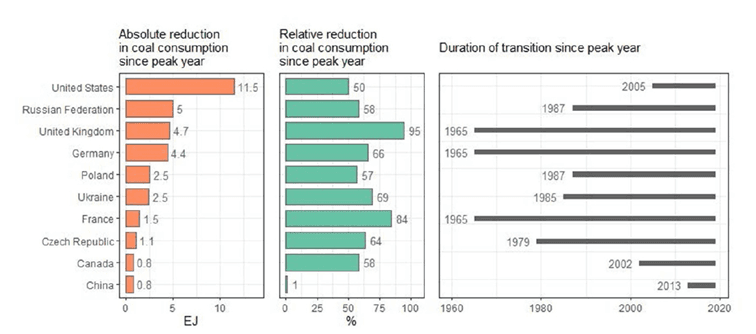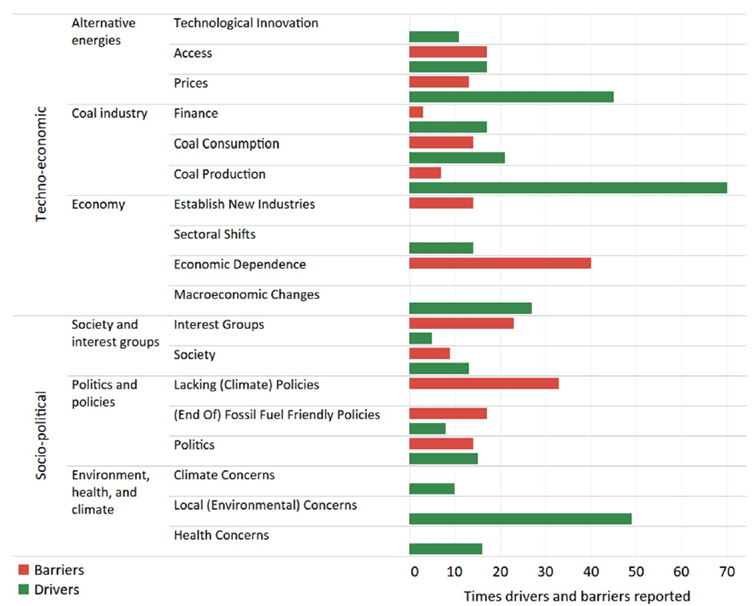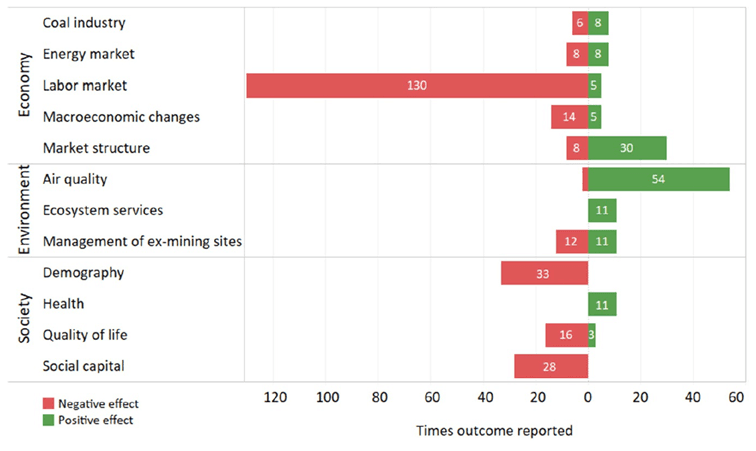16. November 2021New research on historical coal phase-out processes: Learning from the past for future sustainability transitions
A rapid coal phase-out is needed for climate reasons. The challenge is to make this phase-out process as efficient, swift and socially just as possible. To support this endeavour scientifically not only scenario-based modelling is worthwhile, but also a systematic look into the past. This article examines the literature that exists on drivers and barriers of historical coal phase-out processes and draws lessons for today’s transitions.
A rapid coal phase-out is needed for climate reasons. The challenge is to make this phase-out process as efficient, swift and socially just as possible. To support this endeavour scientifically not only scenario-based modelling is worthwhile, but also a systematic look into the past. A new article by Francesca Diluiso et al. published in Environmental Research Letters systematically examined literature that exists on drivers and barriers of historical coal phase-out processes and draws lessons for today’s transitions.
The author team applied the methodology of a “systematic map”. It is a methodological approach to collect and catalogue existing evidence on a specific topic. Through a comprehensive and repeatable search for literature in 5 search engines, the author team identified 194 publications dealing with historical coal phase-out processes.
Figure 1 shows the ten countries with the largest absolute reduction in coal consumption and the duration of the respective transitions since the peak year. The United States experienced the largest absolute decline in coal consumption (11,5 EJ), followed by the Russian Federation (5 EJ) and the United Kingdom (4,7 EJ). In the literature search, it became clear that most research was done on countries in the Global North. 48% of the studies deal with transitions in the UK, the US or Germany (see figure 2).

Figure 1: First ten countries in terms of absolute declines since peak year (source: Diluiso et al. 2021)

Figure 2: Country coverage based on transition type and number of studies grouped by study scale. Source: Diluiso et al. 2021
Figure 3 depicts drivers and barriers for historical coal transitions reported in the studies. Important drivers were the development and existence of alternative and cheaper energies (other fossil fuels as well as renewables) and (local) environmental concerns. Also aspects related to the coal industry itself are more often mentioned as drivers than as barriers, meaning especially high production costs. The most often cited barrier to historical coal transitions is economic dependence of coal regions.

Drivers and barriers of historical coal transitions reported by the studies
The authors differentiated between general drivers and policy instruments that drove the transition. Looking at the policies reported in the studies, there are more regulatory instruments (70%) than economic instruments (30%). Regarding regulatory instruments e.g. air quality regulations and market regulations played a major role in pushing the transitions. Economic instruments include e.g. subsidies and tax credits, as well as taxes and emissions trading schemes.
Additionally, the paper summarizes the outcomes of historical coal transitions (figure 4). Regarding economic effects of the transition, the literature reports mostly negative outcomes, such an increase in the unemployment rate and a shrinking GDP mostly on subnational level. However, looking at the market structure, more studies mention positive aspects such as an increasing diversification of the economy. Social outcomes are also mostly negative – showing the importance of designing a just and equitable transition in coal regions in the future. Several studies report an overall worsening in living conditions and a decrease of municipal and social services. Looking at health effects several studies report positive outcomes, meaning e.g. a reduction in mortality. Also, air quality is reported to increase significantly in the course of a coal transition.

Figure 4: Outcomes of historical coal transitions reported by the studies. source: authors
What can be learned from historical coal transitions for future phase-out processes? First, the literature on historical coal phase out processes is in large part relatively recent and quickly expanding. However, a clear knowledge cluster for the UK, US and German transition can be found and a lack of evidence for the transitions e.g. in some Eastern European countries and generally for the Global South. For example, Russia features the second-highest absolute reduction in coal use but there are hardly any studies. Second, the study shows that managing the structural change properly and enabling a just transition should be at the core of policy interventions, especially regarding supply side transitions. In the past, there have been many transitions where this social aspect of the transition was not managed properly, leading to job losses, outmigration and demographic shrinkage of former coal regions. However, past coal transitions also show that a coal phase out –if properly managed- can also lead to a more diversified and resilient economic landscape und comes along with co-benefits such as better air quality and health standards. Therefore, if negative impacts of a coal phase-out are avoided or managed properly, the overall economic impact may be very positive.
Authors
Paula Walk
Researcher | CoalExit Group
Technische Universität Berlin | Europa-Universität Flensburg
Editor
Co-Head of Research Unit Global Climate Governance
Wuppertal Institute for Climate, Environment and Energy
Energy, Transport, and Climate Policy Division